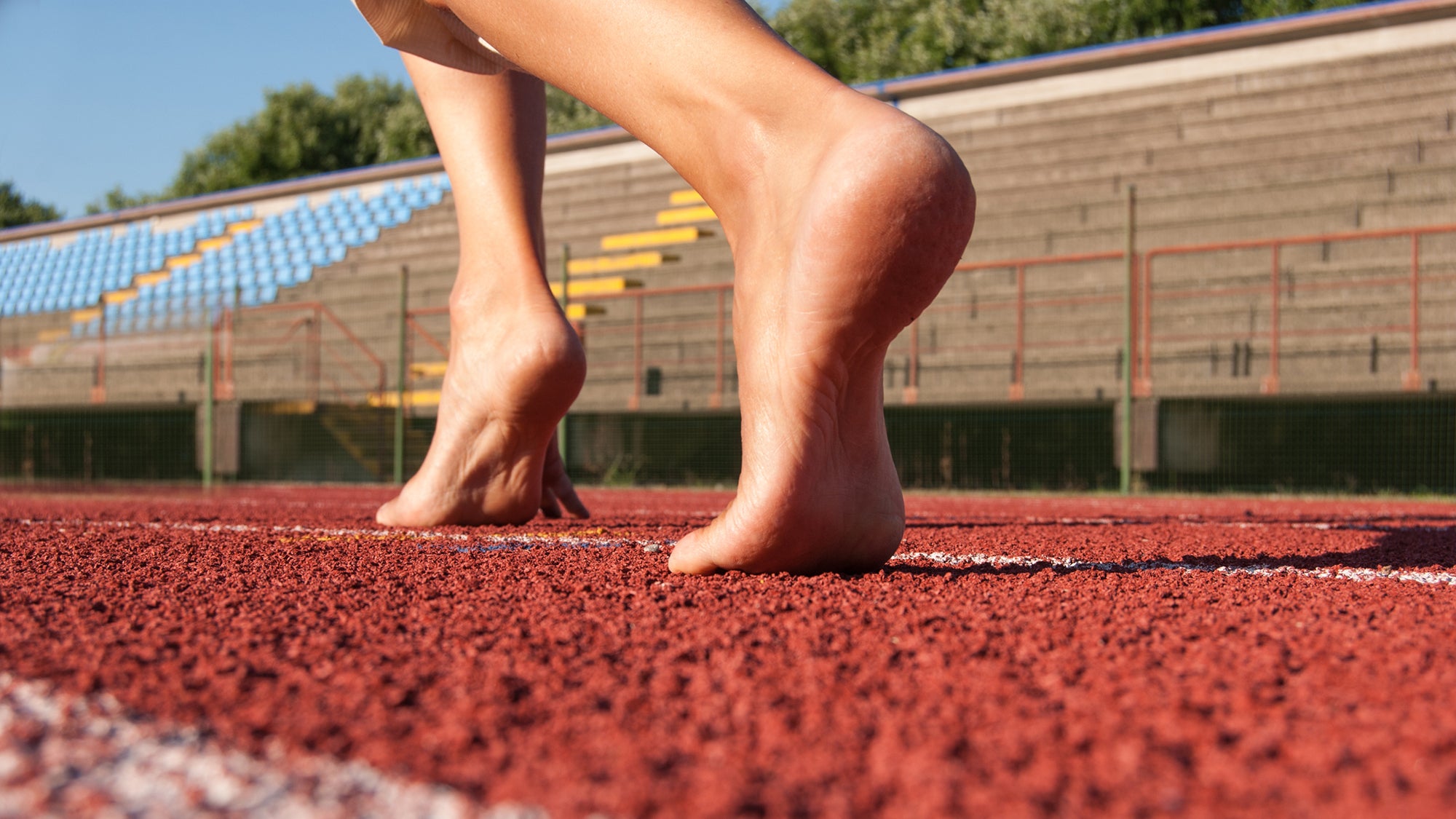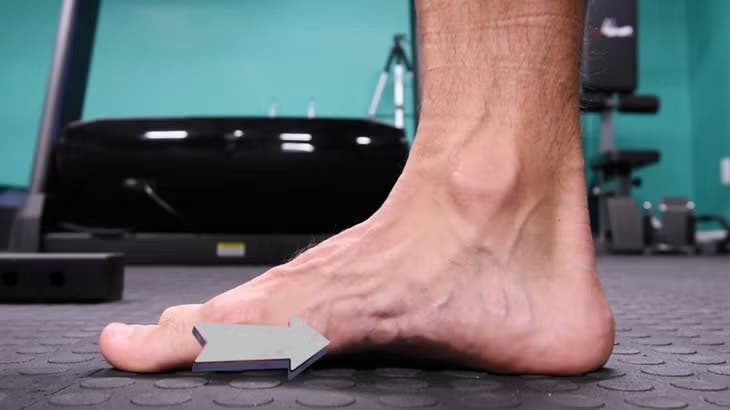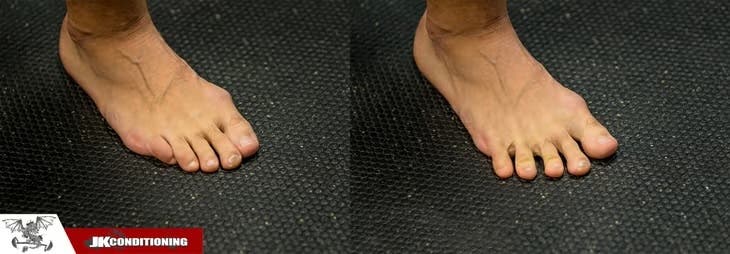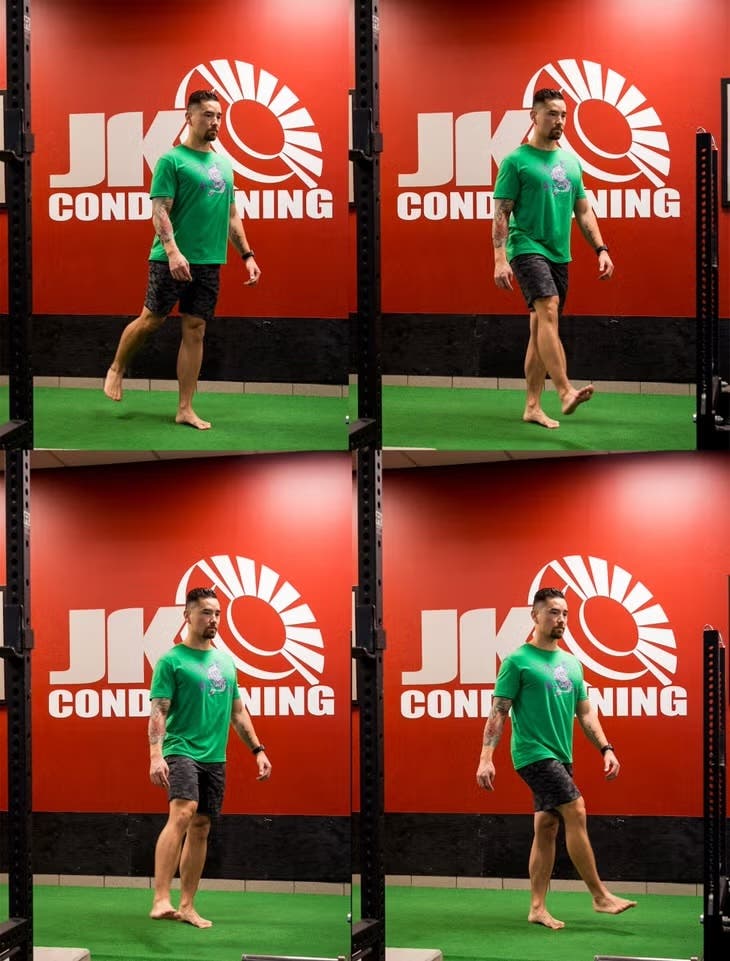Ask a Trainer: How Can I Strengthen My Feet?

Develop strong running feet by completing these exercises. (Photo: Shutterstock)
The muscles in your feet and lower leg are just as important to your running form as are your glutes, quadriceps, and hamstrings, but are often forgotten in strength training routines. If you’re going to ramp up training, you can’t afford to ignore your foundation. Your lower limb muscles need to be strong, resilient, and function in a coordinated fashion for effective energy storage during each stride and to provide a strong balance to get you through the miles. Neglecting foot exercises that work these important running muscles may predispose you to injury and reduce your running economy.
The muscles of the lower limb and foot are divided into two categories based on their function. The local muscles are the intrinsic foot muscles, often referred to as the “foot-core.” They are responsible for maintaining the shape of your arch and for shock absorption. They are smaller in cross-sectional area compared to the global lower limb muscles. Global muscles are larger and are responsible for moving your ankle and flexing and extending your toes.

Weak local muscles may result in an unstable arch that does not absorb impact very well and leads to faulty biomechanics. When local muscles fail to stabilize the foot quickly, global muscles have to do it at a disadvantage, both because this isn’t their primary function and because they have a longer reaction time, exacerbating the instability. This can lead to overuse injuries of the global muscles, plantar fasciitis, and even stress fractures later in your running season.
Traditional foot strengthening exercises usually involve curling the toes to pull a towel toward you or picking up marbles with your toes. These types of exercises will target the local foot muscles but also involve the global muscles. Ideally, “foot core” training should only target the local foot stabilizer muscles.
Your lower limb strengthening routine
1. Short foot exercise

The goal of the short foot exercise is to “shorten” the foot by contracting the intrinsic muscles to raise the arch, or in science-speak, pulling the first metatarsophalangeal joint toward the calcaneus (heel bone).
Sit in a chair in your bare feet. Form a 90-degree angle at your knees and ankles. Without crunching your toes, try to shorten your foot by bringing the ball of your foot toward your heel, doming the arches in your feet. You can focus on one foot at a time or do both at once.
Try not to curl or extend your toes and make sure to keep your foot neutral, not rocking inward or outward – it’s harder than you think. Note that being completely barefoot will enhance your ability to feel sensory input from the bottom surface of the foot, and help you develop the sense of creating the short foot posture.
Hold for 8 seconds and relax. Repeat 5–15 times.
Practice this throughout the day. You can even practice while sitting at your desk.
Once you become competent doing the short foot sitting, attempt the exercise standing on two legs, then on one leg. Eventually, you can activate your arch this way when doing functional activities such as squats, deadlift, lunges, hops – even running.
2. Big toe press

Press your big toe into the floor while lifting your other four toes.
Hold each press for 8 seconds and do 12–15 reps per foot.
Practice throughout the day.
3. Toe splay

Try pulling your toes apart as wide as possible, staying flat on the ground – be careful not to curl or extend them. Focus particularly on moving your big toe away from your other toes. You will feel the arch muscle contract – one study found this one of the most effective ways to activate your arch, if your toe position isn’t compromised by a bunion.
Hold for 8 seconds and relax. Start with 5 repetitions and build up to 25-30.
Practice throughout the day.
4. Leg swings

Unlike dynamic leg swings that use a large amplitude, swinging to the end of your range of motion, do these leg swings with a small amplitude to challenge your balance and hip and ankle stability.
Stand on one leg in your bare feet and create the short foot posture. Swing the non-stance leg forward and backward 15 times. Without rest, swing the same leg left and right in front of your stance leg, also 15 times. Repeat this sequence without resting, then repeat on your opposite leg.
5. Calf raise to big toe press

Stand on the edge of a stair in your bare feet. Let your heels drop below the level of the stair. Do a traditional calf raise, then finish by pressing onto your big toe. This part is difficult for most.
Feel free to hang on to something for balance. Do 12-15 reps.
This story originally appeared on Outside.